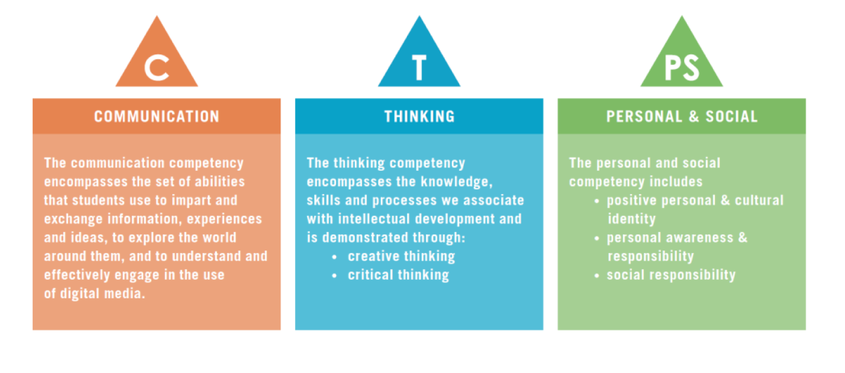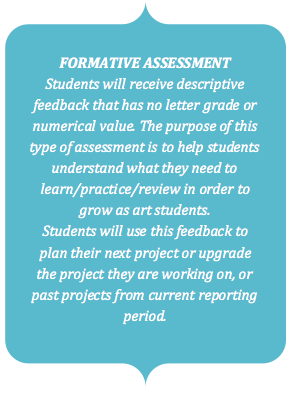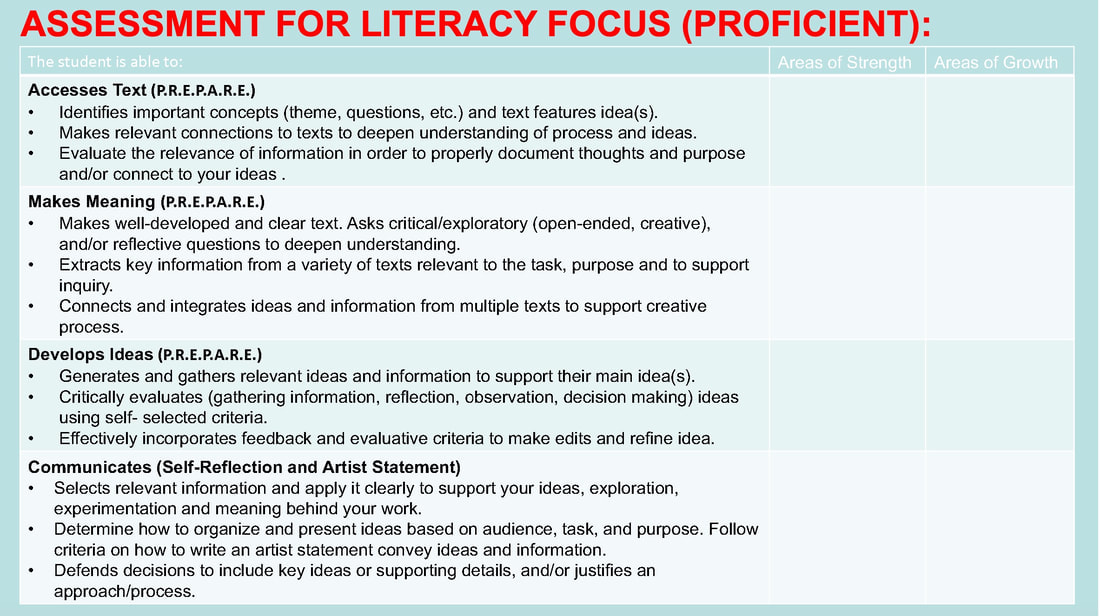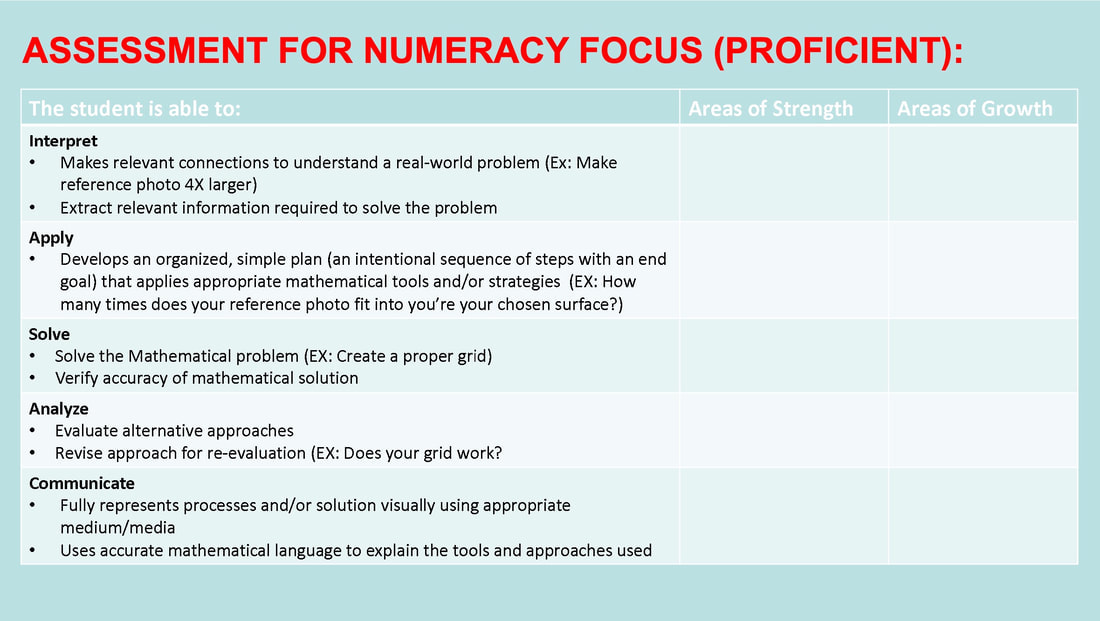As members of Surrey Schools, we would like to humbly acknowledge that we live, work, play and engage in the act of education on the stolen, unceded and traditional shared territories of the hən̓q̓əmin̓əm̓-speaking q̓əc̓iy̓ (Katzie) and q̓wa:n̓ƛ̕ən̓ (Kwantlen) Coast Salish peoples and the North Straits Salish-speaking Semiahmoo Coast Salish peoples.
Indigenous Perspectives: Indigenous knowledge and perspectives are an important part of the historical foundation of both BC and Canada and are integrated into every subject in our curriculum. All students will have opportunities to better understand and respect a variety of cultures, both their own and others.
Indigenous Perspectives: Indigenous knowledge and perspectives are an important part of the historical foundation of both BC and Canada and are integrated into every subject in our curriculum. All students will have opportunities to better understand and respect a variety of cultures, both their own and others.
ASSIGNMENTS AND PROJECTS
COURSE OUTLINE
CORE COMPENTENCIES:
COURSE BIG IDEAS:
Investigate Materials, Processes, and Ideas
You’ll learn how artists and designers decide what to make and why and how to make it.
You’ll practice:
Make Art and Design
You’ll study the processes and techniques that artists and designers use when they create work.
You’ll practice:
Present Art and Design
You’ll explore why and how artists and designers present their work to viewers.
You’ll practice:
You’ll learn how artists and designers decide what to make and why and how to make it.
You’ll practice:
- Reflecting on and documenting experiences to inform your art and design work.
- Exploring materials, processes, and ideas to use in your work.
- Connecting your work to art and design traditions.
- Evaluating works of art and design.
Make Art and Design
You’ll study the processes and techniques that artists and designers use when they create work.
You’ll practice:
- Coming up with questions to guide you in creating works.
- Using practice, experimentation, and revision.
- Choosing and combining materials, processes, and ideas.
- Using the elements and principles of art and design.
Present Art and Design
You’ll explore why and how artists and designers present their work to viewers.
You’ll practice:
- Explaining how you used materials, processes, and ideas in your work.
- Describing how the work shows your skill.
- Identifying the questions that guided you in creating your work.
- Pointing out how your work shows experimentation, practice, and revision.
DESCRIPTION:
The AP program in Studio Art enables highly motivated students to perform at the college level while still in high school. The AP Studio Art Portfolios for Drawing, 2-D Design and 3-D Design are designed for students who are seriously interested in the practical experience of art. Successful completion of the course is not based on a written examination; instead, students submit portfolios for evaluation at the end of the school year.
Our curriculum is set on a semester basis. In Grade 12, students will take Studio Arts 12 and/or Drawing and Painting 12 and/or Sculpture 12 course in semester one to cover their Quality requirements. During first semester time is committed to exploring a variety of media, materials, tools and techniques. Students expand their knowledge of the arts as a process through discussions of artistic concepts, reviews of historical and contemporary precedents and thoughtful reflection of their own and others works. Then students will take the designated self-directed AP course in semester two to work on their concentration. There will be ongoing discussions throughout the year about the students’ sustained investigation. In second semester students bring to fruition their topics and ideas for their investigation. The AP students should expect to meet for 2 hours after school during the week and are expected to do the minimum of 30 minutes to 1 hour of homework daily.
Our curriculum is set on a semester basis. In Grade 12, students will take Studio Arts 12 and/or Drawing and Painting 12 and/or Sculpture 12 course in semester one to cover their Quality requirements. During first semester time is committed to exploring a variety of media, materials, tools and techniques. Students expand their knowledge of the arts as a process through discussions of artistic concepts, reviews of historical and contemporary precedents and thoughtful reflection of their own and others works. Then students will take the designated self-directed AP course in semester two to work on their concentration. There will be ongoing discussions throughout the year about the students’ sustained investigation. In second semester students bring to fruition their topics and ideas for their investigation. The AP students should expect to meet for 2 hours after school during the week and are expected to do the minimum of 30 minutes to 1 hour of homework daily.
COURSE FEE:
The fee for this course is approximately $100 (fee cost vary every year). This fee covers the portfolio submission to the AP College Board.
PORTFOLIO:
Students will submit a portfolio of artwork for evaluation at the end of the school year. Students will upload digital images of your work and commentary online and also send in physical artworks. All students enrolling in the class are expected to submit a portfolio.
The three Art and Design portfolios (2-D, 3-D, and Drawing) share a basic, two-section structure, which requires you to show a fundamental competence and range of understanding in visual concerns and methods. Each section contributes to the final portfolio score, which is on a 5-point scale.
Any subject, content, style, media, and technique are acceptable.
Note: You may submit more than one Art and Design portfolio exam in a given year, but each must be a different type of portfolio. You may not duplicate works or images among the portfolios and portfolios may not be combined. For example, if you want to submit a portfolio for Drawing, 2-D Art and Design and/or 3-D Art and Design, you will need to submit separate portfolios with completely different sets of art work, and you must order multiple exams.
The table below summarizes the section requirements for each of the three portfolios.
Section 1: Sustained Investigation (60% of score)
Drawing, 2-D and 3-D Portfolios: 15 digital Images
You’ll create a body of work that demonstrates:
Section 2: Selected Works (40% of score- Includes all sketchbook assignments)
Drawing and 2-D Portfolios: 5 physical works
3-D Portfolios: Images of 5 works, 2 views each, for a total of 10 images
You’ll choose works that demonstrate:
For each work, you’ll have to describe in writing:
Works may come from the Sustained Investigation section, but they do not have to. They maybe a group of related works, or a combination of related and unrelated works.
The three Art and Design portfolios (2-D, 3-D, and Drawing) share a basic, two-section structure, which requires you to show a fundamental competence and range of understanding in visual concerns and methods. Each section contributes to the final portfolio score, which is on a 5-point scale.
Any subject, content, style, media, and technique are acceptable.
Note: You may submit more than one Art and Design portfolio exam in a given year, but each must be a different type of portfolio. You may not duplicate works or images among the portfolios and portfolios may not be combined. For example, if you want to submit a portfolio for Drawing, 2-D Art and Design and/or 3-D Art and Design, you will need to submit separate portfolios with completely different sets of art work, and you must order multiple exams.
The table below summarizes the section requirements for each of the three portfolios.
Section 1: Sustained Investigation (60% of score)
Drawing, 2-D and 3-D Portfolios: 15 digital Images
You’ll create a body of work that demonstrates:
- Sustained investigation through practice, experimentation, and revision.
- Sustained Investigation of materials, processes, and ideas.
- Synthesis of materials, processes, and ideas.
- Art and design skills
- The question that guided your sustained investigation.
- How your sustained investigation shows evidence of practice, experimentation, and revisions guided by your questions.
Section 2: Selected Works (40% of score- Includes all sketchbook assignments)
Drawing and 2-D Portfolios: 5 physical works
3-D Portfolios: Images of 5 works, 2 views each, for a total of 10 images
You’ll choose works that demonstrate:
- Art and design skills.
- Synthesis of materials, processes, and ideas.
For each work, you’ll have to describe in writing:
- Your ideas.
- The materials you used.
- The processes you used.
Works may come from the Sustained Investigation section, but they do not have to. They maybe a group of related works, or a combination of related and unrelated works.
AP STUDENT ART SHOW:
All AP students will take part in both Semester 1 and 2 District Art Exhibitions. NO EXCEPTIONS! Chosen art works will need to have an artist statement.
ACADEMIC DISHONESTY:
Plagiarism and cheating will not be tolerated. This means copying artworks or writings from any source. The difference between plagiarism and inspiration will be addressed throughout the course.
Definition: Academic Dishonesty is a deliberate attempt to disrupt the learning process by misrepresenting another’s work as one’s own. Dishonesty during tests or classwork includes unauthorized communicating; copying materials or allowing another student to copy; using prohibited notes or devices; obtaining prior knowledge of test content; and/or removing or distributing all or part of any test. Copying another person’s assignment; providing homework/ classwork for another student to replicate; plagiarizing or submitting a paper or project which is not one’s own work; and submitting falsified information for grading purposes are also examples of dishonesty.
Definition: Academic Dishonesty is a deliberate attempt to disrupt the learning process by misrepresenting another’s work as one’s own. Dishonesty during tests or classwork includes unauthorized communicating; copying materials or allowing another student to copy; using prohibited notes or devices; obtaining prior knowledge of test content; and/or removing or distributing all or part of any test. Copying another person’s assignment; providing homework/ classwork for another student to replicate; plagiarizing or submitting a paper or project which is not one’s own work; and submitting falsified information for grading purposes are also examples of dishonesty.
CURRICULAR COMPETENCIES:
Students are expected to be able to do the following ("I" Statements)
Reason and Reflect
Connect and Expand
Explore and Create
Communicate and Document
Reason and Reflect
- I can understand the purpose of critiques and feedback. I can accept constructive feedback and use it to make changes that improve my work.
- I can ask questions about and describe how artists and their peers use materials, technologies and techniques in their art making. I can do this using art terms/language.
- I can ask questions about and try to understand why artists make certain choices in their works.
- I can come up with thoughtful answers/responses to questions about art, why it is important, and what makes it valuable.
- I can reflect on the way that personal, social, cultural, environmental, and historical issues impact artistic works.
Connect and Expand
- Create works of art that convey their personality and world views.
- Think about Indigenous perspectives, customs, and ways of understanding the world and their place in it.
- Explore possible careers in visual arts. Understand the different opportunities there are for them to study or work in visual arts after high school.
- Use art to connect with people from other schools, cities, or countries.
Explore and Create
- I can create art by using my senses (what I see, what I hear, what I smell, what I feel), my imagination, and inquiry (inspired by questions I have).
- I can learn by experimenting and thinking creatively using lots of different materials, techniques, and technologies.
- I can put thought into the materials, techniques and technologies that I choose to use so that I am able to create art that clearly shows my ideas.
- I can learn from taking risks and making mistakes.
- I can improve my technique as an artist by learning about different styles of art and practicing them.
- I can put thought into my creations and when I come to a challenge or road block, I can use it as an opportunity to be creative and try something different.
- I can understand the importance of the history of art and the works created by famous artists. I can make connections between what was happening in the world at the time that certain styles were created and subject matters were explored.
- I can understand, apply, and demonstrate the elements of art and the principles of design.
Communicate and Document
- I can photograph, post, and talk about/write about my work. I can reflect on the way that personal, social, cultural, environmental, and historical issues impact my artistic works.
- I can use art to show that I understand who I am, where I come from, and how I fit in to the world.
- I can share ideas and express feelings through the art that I create.
- I can use art to comment on things that are happening in society and the world.
COURSE ASSESSMENT:
|
The purpose of assessment is to facilitate learning and move it forward in an equitable and inclusive way. It helps students answer three questions about their learning:
Students are responsible for planning and creating work to satisfy the curricular competencies. |
Student assessment will be based on the following:
- Brainstorming, preliminary drawings and image collection that demonstrate thinking process and development of ideas (P.R.E.P.A.R.E.).
- Sketchbook exploration assignments throughout the semester.
- Participate in class critiques, regular peer and teacher feedback.
- Regular documentation of work in the students digital art portfolio (daily or weekly documentation based on assignment expectations).
- Complete weekly guided reflections in digital art portfolio.
- Exploration of techniques and experimentation of materials (assignments and projects).
- Reporting assessment will be generated after the student/teacher mid-term and final portfolio interview.
PROFICIENCY SCALE:
AP COLLEGE BOARD ASSESSMENT:
All portfolios are assessed by at least four highly experienced studio art educators (AP Art and Design teachers or higher education faculty). These evaluators, called AP readers, are trained to apply standardized scoring guidelines. Each of the two sections is reviewed independently based on criteria for that section.
If there is a wide divergence in the scores assigned by two readers to the same section of a portfolio, the section is forwarded to two Reading leaders for review and resolution of the scores.
College Board Scoring Guidelines
5: strong
4: good
3: moderate
2: weak
1: poor
If there is a wide divergence in the scores assigned by two readers to the same section of a portfolio, the section is forwarded to two Reading leaders for review and resolution of the scores.
College Board Scoring Guidelines
5: strong
4: good
3: moderate
2: weak
1: poor
LITERACY AND NUMERACY FOCUS:
B.C.’s redesigned curriculum supports deep learning through concept-based and competency driven approaches. In addition to the Core Competencies and the Arts Education curricular competencies, emphasizes literacy and numeracy as skills interwoven throughout all learning areas.
While literacy and numeracy are commonly associated with language arts and math, thinking and communication skills are applied to all areas of learning, as described by the curricular competencies. Being numerate and literate are essential aspects of the educated citizen.
While literacy and numeracy are commonly associated with language arts and math, thinking and communication skills are applied to all areas of learning, as described by the curricular competencies. Being numerate and literate are essential aspects of the educated citizen.
COURSE DIGITAL PORTFOLIO (SPACES by MyBlueprint):
The visual arts program will be using MyEdBC and Microsoft 365 Teams. As well, students will use SPACES (by MyBlueprint) to communicate learning, self-reflect and assessment. Students will be asked to document their work and complete self-assessment weekly using SPACES. Student can access their SPACES account using their school district login credentials (ex. [email protected] and password). Students will be able to use FreshGrade through the online portal.. Parents will be sent an invite and will be able to see student assessment and assignments using the SPACES Parent online portal.
CLASSROOM EXPECTATIONS:
- BE ON TIME to class! There will be entrance and exit activities DAILY!
- IF AWAY, students must make up missed work. Visit the class website for missed lessons and sketchbook assignments.
- Bring your art supplies daily! Be prepared to work at the start of class.
- HALL PASS will be required in order to leave the classroom. Our school policy is that ONE student is allowed out at a time for washroom and locker visits. Students with appointments with support staff, will also require a hall pass.
- No use of others ideas, images, paintings or drawings as they are already the creation/idea of another artist. The use of other people’s work is PLAGIARISM! Students will need to demonstrate progress DAILY!
- BE RESPECTFUL (of yourself and others) this includes: teachers, your peers and guests.
- NO FOOD or beverages (unless it has a lid) are permitted in the classroom during instructional time. Students will NOT be allowed to leave the classroom to use the cafeteria or vending machines, as we have a NO FOOD policy in the art classroom during instructional time. Please plan accordingly if you required food or drink (special circumstances are an exception).
- Clean-up after yourself! At the end of class students need to clean-up their studio space and materials. Students will also need to put away their artwork and sketchbook in the assigned space.
- Don't touch others projects or supplies without permission.
- Try your BEST!
CLASS CELLPHONE POLICY:
You can ONLY use your cellphones for research, work documentation and assessment during Studio Time! Student who break the rules will be warned first. If warnings do not work, and email home and phone privileges will be lost. If it continues administration will be contacted. We have a class set of iPads available for students to use for research and FreshGrade. Do’s: You can listen to music (commit to a playlist/NO surfing for songs), take pictures of your artwork, and look up image resources for project ideas you are working on. Don’ts: Play games, call, text or message, use social media, and take selfies or pictures of other students in the class.
ART SUPPLY STORE:
MUST BRING ART SUPPLIES (items with an asterisk*) to EVERY class… NO EXCEPTIONS!!
*Pencils (HB, 2B (or 3B) and 5B), *eraser, *sketchbook, *fine tip black felt pen (fine tip sharpie is a good option for beginners. A Fine Tip Micron is recommended for more advanced students), and *pencil crayons (Crayola pencil crayons are a good option for beginners. Prisma pencil crayons are recommend for more advanced students).
Sketchbooks are 30% of the student’s grade. Under regular circumstances, we recommended to get a coil bound sketchbook with over 100-150 pages (8.5x11). Due to the shortness of the course, students could also purchase a smaller sketchbook (50+ white pages 8.5X11). Students will work on their sketchbooks on a daily basis. Students can also use sketchbooks from a previous art class.
Students health and safety is our primary concern! We encouraged students to bring their own supplies to their tutorial, such as a ruler, scissors, glue, felts, etc. We have some of these supplies in the classroom, but families need to be aware that multiple students will have access to them and materials won't sanitized. Students are responsible to sanitize any shared supplies. The program will supply students with project paper, acrylic paint and specialty materials (clay, clay tools, inks, etc.). We will also have brushes that will be shared with their class. If students don’t want to share brushes, they are welcome to bring their own.
*Pencils (HB, 2B (or 3B) and 5B), *eraser, *sketchbook, *fine tip black felt pen (fine tip sharpie is a good option for beginners. A Fine Tip Micron is recommended for more advanced students), and *pencil crayons (Crayola pencil crayons are a good option for beginners. Prisma pencil crayons are recommend for more advanced students).
Sketchbooks are 30% of the student’s grade. Under regular circumstances, we recommended to get a coil bound sketchbook with over 100-150 pages (8.5x11). Due to the shortness of the course, students could also purchase a smaller sketchbook (50+ white pages 8.5X11). Students will work on their sketchbooks on a daily basis. Students can also use sketchbooks from a previous art class.
Students health and safety is our primary concern! We encouraged students to bring their own supplies to their tutorial, such as a ruler, scissors, glue, felts, etc. We have some of these supplies in the classroom, but families need to be aware that multiple students will have access to them and materials won't sanitized. Students are responsible to sanitize any shared supplies. The program will supply students with project paper, acrylic paint and specialty materials (clay, clay tools, inks, etc.). We will also have brushes that will be shared with their class. If students don’t want to share brushes, they are welcome to bring their own.
|
*Optional: Sketchbook, shading pencils and some specialty supplies can be purchased from our school. Visit our School Art Supplies store (click button):
|





